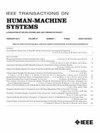Reconstructing Visual Stimulus Representation From EEG Signals Based on Deep Visual Representation Model
IF 4.4
3区 计算机科学
Q2 COMPUTER SCIENCE, ARTIFICIAL INTELLIGENCE
引用次数: 0
Abstract
Reconstructing visual stimulus representation is a significant task in neural decoding. Until now, most studies have considered functional magnetic resonance imaging (fMRI) as the signal source. However, fMRI-based image reconstruction methods are challenging to apply widely due to the complexity and high cost of acquisition equipment. Taking into account the advantages of the low cost and easy portability of electroencephalogram (EEG) acquisition equipment, we propose a novel image reconstruction method based on EEG signals in this article. First, to meet the high recognizability of visual stimulus images in a fast-switching manner, we construct a visual stimuli image dataset and obtain the corresponding EEG dataset through EEG signals collection experiment. Second, we introduce the deep visual representation model (DVRM), comprising a primary encoder and a subordinate decoder, to reconstruct visual stimuli representation. The encoder is designed based on residual-in-residual dense blocks to learn the distribution characteristics between EEG signals and visual stimulus images. Meanwhile, the decoder is designed using a deep neural network to reconstruct the visual stimulus representation from the learned deep visual representation. The DVRM can accommodate the deep and multiview visual features of the human natural state, resulting in more precise reconstructed images. Finally, we evaluate the DVRM based on the quality of the generated images using our EEG dataset. The results demonstrate that the DVRM exhibits an excellent performance in learning deep visual representation from EEG signals, generating reconstructed representation of images that are realistic and highly resemble the original images.基于深度视觉表征模型从脑电图信号重构视觉刺激表征
重建视觉刺激表征是神经解码的一项重要任务。迄今为止,大多数研究都将功能磁共振成像(fMRI)作为信号源。然而,由于采集设备的复杂性和高成本,基于 fMRI 的图像重建方法难以广泛应用。考虑到脑电图(EEG)采集设备成本低、便于携带的优势,我们在本文中提出了一种基于脑电信号的新型图像重建方法。首先,为了满足视觉刺激图像快速切换的高识别性,我们构建了视觉刺激图像数据集,并通过脑电信号采集实验获得了相应的脑电信号数据集。其次,我们引入由主编码器和从属解码器组成的深度视觉表征模型(DVRM)来重构视觉刺激表征。编码器基于残差-残差密集块设计,以学习脑电信号和视觉刺激图像之间的分布特征。同时,解码器采用深度神经网络设计,从学习到的深度视觉表征重建视觉刺激表征。DVRM 可以适应人类自然状态下的深层和多视角视觉特征,从而获得更精确的重建图像。最后,我们利用脑电图数据集,根据生成图像的质量对 DVRM 进行了评估。结果表明,DVRM 在从脑电信号学习深度视觉表征方面表现出色,生成的重建图像表征逼真,与原始图像高度相似。
本文章由计算机程序翻译,如有差异,请以英文原文为准。
求助全文
约1分钟内获得全文
求助全文
来源期刊

IEEE Transactions on Human-Machine Systems
COMPUTER SCIENCE, ARTIFICIAL INTELLIGENCE-COMPUTER SCIENCE, CYBERNETICS
CiteScore
7.10
自引率
11.10%
发文量
136
期刊介绍:
The scope of the IEEE Transactions on Human-Machine Systems includes the fields of human machine systems. It covers human systems and human organizational interactions including cognitive ergonomics, system test and evaluation, and human information processing concerns in systems and organizations.
 求助内容:
求助内容: 应助结果提醒方式:
应助结果提醒方式:


